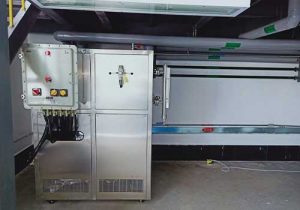water bath in the laboratory
Introduction to Water Baths in the Laboratory
Water baths are indispensable in laboratory environments for their ability to provide a stable temperature environment for a multitude of scientific applications. They are used for incubating samples, facilitating temperature-dependent chemical reactions, and in various analytical procedures that require precise temperature control.

Mechanisms of Water Baths
The mechanism of a water bath involves heating water to a desired temperature and maintaining it there through the use of a thermostat. The thermostat monitors the water temperature and activates the heating element as needed to keep the temperature constant. The water then transfers heat to the samples placed in the bath, ensuring uniform heating.
Types of Water Baths
There are several types of water baths, each designed for specific applications:
Static Water Baths: These are the simplest and most common type, used for applications that do not require mixing or stirring.
Shaking Water Baths: Equipped with a platform that shakes or vibrates, these are used for applications that require aeration or mixing.
Circulating Water Baths: These have a pump that circulates water to maintain a uniform temperature over a larger volume or to heat other containers outside the bath.
Operating a Water Bath
To operate a water bath, follow these general steps:

Fill the bath with an appropriate amount of water, ensuring that the water level is below the maximum fill line.
Set the desired temperature using the thermostat or digital control panel.
Turn on the bath and allow it to reach the set temperature, which is usually indicated by a change in the display or a light signal.
Place the samples in the bath, ensuring they are fully submerged.
Monitor the temperature throughout the process to ensure it remains stable.
Safety Considerations
When using a water bath, it is crucial to adhere to safety guidelines:
Always wear appropriate personal protective equipment, such as gloves and safety glasses.
Never leave a water bath unattended while it is operating.
Regularly check the water level and top up as necessary to prevent the heater from drying out.
Ensure the bath is placed on a stable, heat-resistant surface.
Applications of Water Baths in the Laboratory
Water baths are used in a wide range of laboratory applications, including:

Incubation of Biological Samples: For cell cultures, bacterial growth, and enzyme reactions.
Chemical Reactions: To provide a controlled temperature for exothermic or endothermic reactions.
Thermal Cycling: In processes like polymerase chain reaction (PCR), where samples need to be cycled through different temperatures.
Sample Preparation: For warming or cooling samples to a specific temperature before analysis.
Conclusion
Water baths are versatile and essential pieces of laboratory equipment that enable precise temperature control for a variety of applications. Understanding the different types, proper operation, and safety considerations is key to leveraging their full potential in scientific research and analysis. By following best practices and adhering to safety protocols, laboratories can ensure the reliability and accuracy of their experiments and processes.
Related recommendations
Causes of Hydraulic Shock Failure of Low Temperature Chiller Compressor
1302Causes of Hydraulic Shock Failure of Low Temperature Chiller Compressor As a classification of industrial chillers, low-temperature chillers are widely used in industrial applications. During...
View detailschilled glycol
255IntroductionChilled glycol plays a pivotal role in numerous industrial, commercial, and even some residential cooling applications. As a specialized coolant, it has the unique ability to operate ...
View detailsWhat should be noted in the chiller manufacturing?
1018What should be noted in the chiller manufacturing? During the manufacturing process of the cooler, the following points need to be noted: 1. Material selection: Select materials ...
View detailswater chiller singapore
324IntroductionSingapore, with its year - round tropical climate characterized by high temperatures and humidity, heavily relies on cooling systems to ensure comfortable living and working environme...
View details
 LNEYA Chiller
LNEYA Chiller







HelloPlease log in